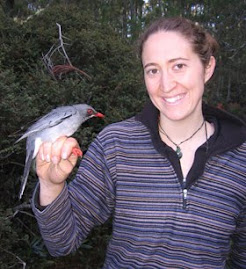
I'm in Santo Domingo now. We safely made it up to Macaya--an arduous two-day hike with mules, porters, and guides cutting a trail to the summit. We succeeded at finding a handful of courting Black-capped Petrels as well as Golden Swallows, Hispaniolan Crossbills, and Bicknell's Thrush. I enjoyed a small taste of Haitian culture, learned a spattering of Creole, and marveled at their amazing singing voices. While staying in the small village of Formon, they bid everyone a bon voyage with a dawn procession and hymns. It was incredibly moving and beautiful, and just one of the many times I wished I had sound recording equipment.
Meals were basic--plain spaghetti for breakfast, rice and beans for lunch, and cracked wheat for dinner. That is, if we had three meals a day. Fortunately Jim brought along some sun-dried tomatoes and chipotle peppers to add a little flavor, but I still craved citrus the entire time. We were at too high an elevation--2300 m--for any fruit to grow on the trees.

Tomorrow we head to Oviedo to spend Christmas with some friends. From there we'll head north into the Sierra de Bahoruco to a site called Lomo del Toro. Petrel and crossbill encounters in our future....
-Julie
(top photo: Jim, local porter, Enold, and Anderson hiking up to the town of Formon)
(bottom photo: Anderson cliffside along the western ridge of Formon)


